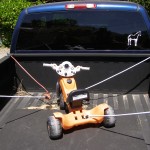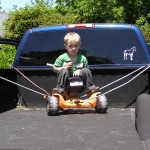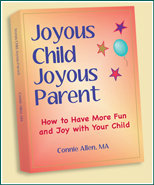I had my 3-year-old grandson Sebastian here this week for our usual Tuesday time together. I always enjoy watching his enthusiasm to explore and create.
As I observed and played with him, I discovered something interesting about what he does when he creates, aka plays.
We have a rich variety of cool stuff at our place – two “hick-up’s” (Bas’s word for ‘pick-up’), lots of tools, ropes, bungee cords, a wood pile, all of which invite creating boy-style.
After sitting in the cab of our blue “hick-up” for a while and turning the dials, he asks to look at the area between the seats, an area filled with fascinating tools to explore. He spots the bungee cords, takes the red one, and walks to the back of the truck to find some way to use it, something to hook it to.
The tie-down’s around the pick-up bed are the perfect place. He asks me to lift him into the back of the truck where he hooks one end and then looks for a place to hook the other end. He tries several possibilities and the cord won’t stretch far enough.
Back to the other bungee cords, longer ones. He discovers the white bungee cords will stretch between two of the tie-downs’s on one side. Next question he asks, “What can I do with this?”
“Ah, I can use it to help me climb up the tire and get in and out of the truck by myself”. He repeats this several times. New hand-holds are discovered and he’s quickly swinging his leg over the top to get in.
Back to the other bungee cords and the process continues until he has 4 bungee cords fastened to 4 tie-down’s. Again he asks, “What can I do with this?”
“Connie, put my cycle (his Big Wheels) in here.”
Now he finds places to hook the unfastened ends of the bungee cords to his bike.
And so it goes. He finds tools (stuff in his physical environment) that catches his eyes and then explores ways to use them. He is in a constant state of exploration and discovery. The question he always seems to be asking is “What can I do with this? How can I use it?”
Thus, he develops both coordination and understanding about our physical world. His curiosity and experimentation motivate him and keep him inspired to discover more principles of our physical world, all of which will keep him safe and help him function successfully the rest of his life.
This is learning at it’s best. In fact, this natural, self-driven way of learning is the best way for children of all ages to learn. He asks questions and finds answers through experimentation, just like any good scientist.
What happens to this natural curiosity and drive to learn as children grow older? Why do children seem to stop being interested in learning and to need the external motivation of grades and gold stars? The answer – we adults believe we need to “teach” them in order for them to learn.
Not true! The best way for children of all ages to learn is finding answers to self-created questions.
How have you created an environment in which your child’s natural curiosity and experimentation have flourished? What could you create to nurture his learning from the inside out?
Please write in the comment space below and share with me what inspires your child, what you’ve done to nurture her interests, or what you’re going to do after reading this article.




 Just a little bit about me -- I'm a coach for parents, visionary guide, insightful trainer, and powerful consultant.
Just a little bit about me -- I'm a coach for parents, visionary guide, insightful trainer, and powerful consultant.